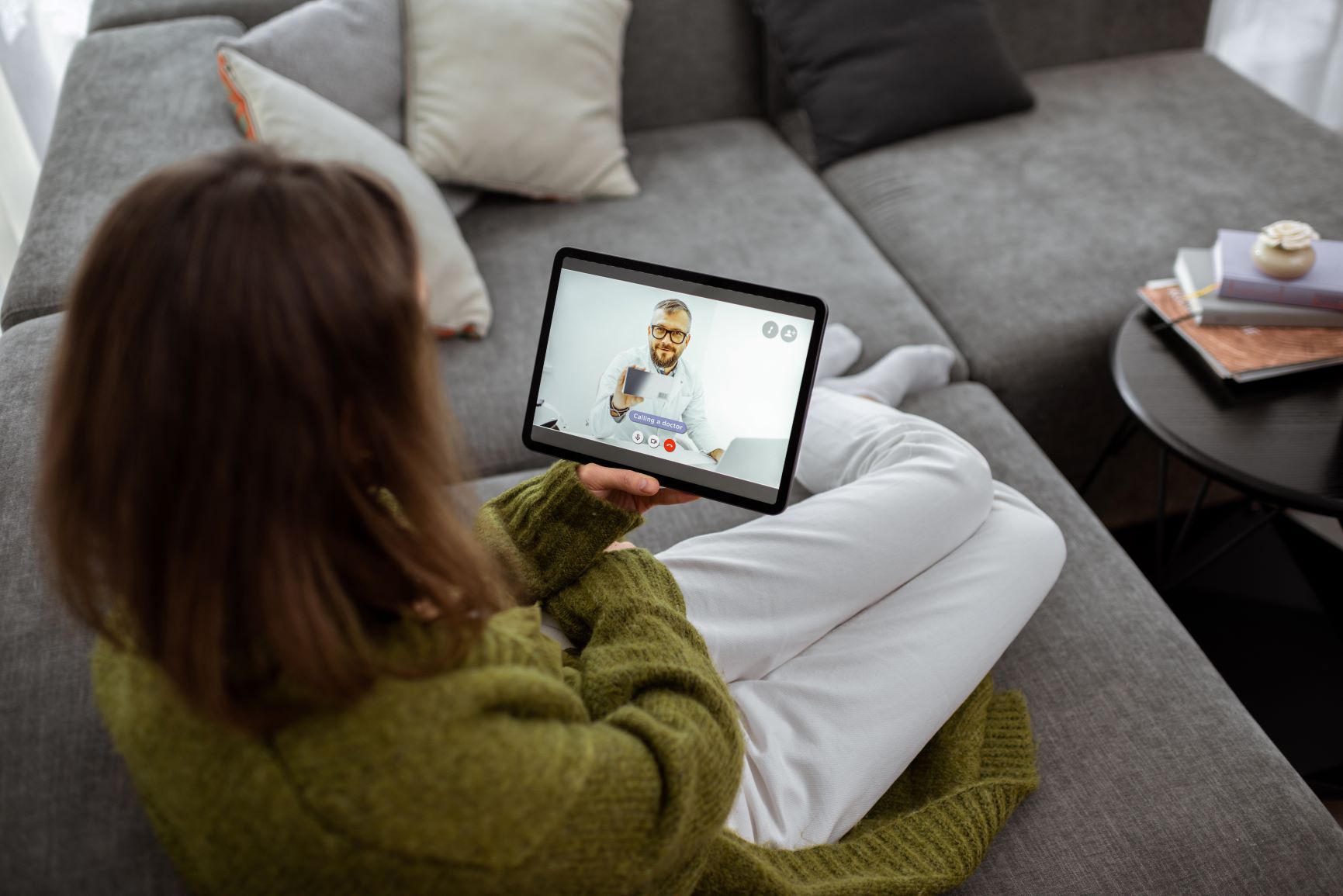Telemedicine allows anyone to receive counseling and see a doctor without leaving their home. There are a few types of telemedicine: it can be done over the phone, over a video call, through a website portal, or in a hybrid model. However it is done, it was created to make healthcare accessible.
So what are the types of telemedicine? Let’s go over it now.
Store-and-Forward
Store-and-forward telemedicine, also known as asynchronous telemedicine, is used when you and your doctor can’t meet screen-to-screen. Instead, it’s a transfer of medical data. You or your doctor can send along images, biosignals, screens, tests, etc., and those documents will be stored in a secure server until the other party can look them over.
This practice is used so you can still get the care you need, but it’s on a little bit of a delay. You don’t need to come into the office, but you also lose the immediate response.
With proper structure and care, this technique does actually save time. However, it relies on a history report and documented information or images, rather than a physical examination, which has the potential to cause complications such as misdiagnosis.
This practice is commonly used in dermatology, radiology, and pathology.
Remote Monitoring
Remote monitoring is where you self-monitor or self-test using a range of technological devices to monitor health and clinical signs of a patient remotely. Every test can be done at home under the supervision of a healthcare provider.
Benefits of remote monitoring include cost effectiveness, more frequent monitoring. and greater patient satisfaction. There is the risk of tests being inaccurate, but the outcome is generally good.
This is extensively used in the management of chronic diseases such as cardiovascular disease, diabetes mellitus and asthma. In some cases, it’s used to monitor drug abuse too.
RPM is also being used in senior living homes to prevent falls and monitor the vital health statistics of residents.
Real-Time Interactive Services
Interactive services, also known as synchronous video, can provide immediate advice to patients who require medical attention. It’s a live, two-way interaction between a person and a healthcare provider using audiovisual telecommunications technology. There are several different mediums utilized for this purpose, including phone, online and home visits. A medical history and consultation about presenting symptoms can be undertaken, followed by assessment similar to those usually conducted in face-to-face appointments.
This kind of telehealth is often used to treat common illnesses, to determine if a patient should proceed to an emergency room, or to provide psychotherapy sessions.
Mobile health or mHealth
mHealth uses mobile communications devices, such as smartphones and tablet computers, and hundreds of software applications for these devices, which can do almost anything imagined for supporting healthcare.
Direct2Recovery’s Method
We are an outpatient that uses medicine-assisted treatment, paired with counseling. When you enroll in our program, you will have access to healthcare professionals around the clock without living onsite.
Direct2Recovery provides access to a doctor from your phone or computer for a low flat fee or subscription price. There’s no need to leave your home or office, no crowded waiting rooms and no insurance forms or paperwork. Easy, convenient and efficient.
We utilize real-time services, paired with remote monitoring to provide the best results.
What Does Telemedicine for Substance Use Look Like?
Telemedicine through Direct2Recovery empowers you to talk with your provider and counselor from the comfort and safety of your home. Everything you can do in a clinic is done through a video call, including drug screening.
The Benefits of Telemedicine:
- Easy 24-hour remote access
- Lower costs on average
- Improved quality of care delivery
- Supplements and enhances traditional face-to-face medicine
- Improves patient agency, engagement, and satisfaction
- Improves provider satisfaction
What is Medication-Assisted Treatment?
MAT is a combination of medication and behavioral therapy to create a holistic approach to treat substance use disorders. We combine the use of behavioral therapy and Suboxone.
What is Behavioral Therapy Necessary?
Behavioral therapy is one of the most commonly utilized treatments used during substance rehabilitation. It helps reverse addiction while reducing cravings through positive reinforcement. Therapy and counseling are commonly used to help treat addictions so individuals can better handle triggers that cause the need for their substance of choice.
Suboxone: A Key Tool in Fighting Opioid Addiction
First, let’s talk about the name, Suboxone. Suboxone is the brand name of the drugs Buprenorphine/Naloxone. There are other brands including Sublocade and Zubsolv. They’re all similar medication with the same use.
Suboxone is a combination of semi-synthetic opioid (buprenorphine), mixed with an opioid blocker (naloxone). This means Suboxone is designed to block opioids, while mimicking the effects of opioids to reduce withdrawal symptoms and craving.
When appropriately dosed, using Suboxone can:
- Suppress symptoms of opioid withdrawal
- Decrease cravings for opioids
- Reduce illicit opioid use
- Block the effects of other opioids
- Help patients stay in treatment
If you want to know more about our program, you can read all about who we are, what is a suboxone clinic, and more in our blog. Or you can contact us at any time. We’re happy to help in any way we can.





